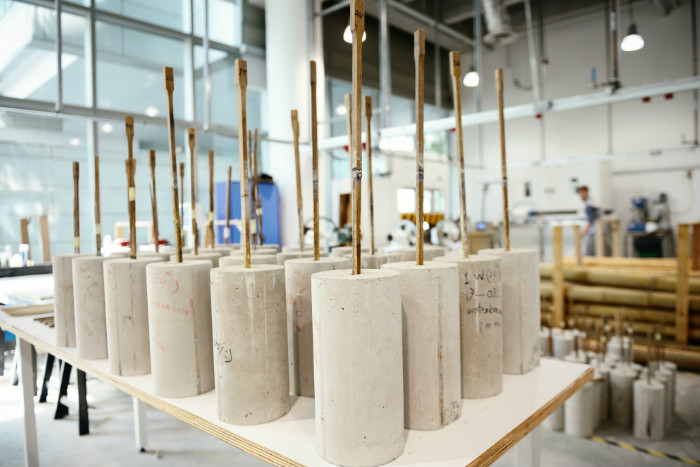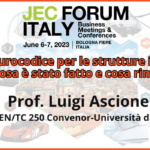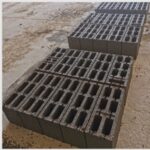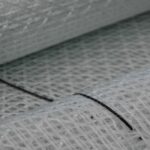Bamboo is one of the world’s oldest structural materials and has been used in construction for centuries. Now new research could potentially bolster its continued resurgence and use as a material in green structures.
Steel-reinforced concrete is the most common building material in the world. Developing countries use close to 90 per cent of the cement and 80 per cent of the steel consumed by the global construction sector.
According to research by the chair of architecture and construction at Future Cities Laboratory (FCL) in the Singapore-ETH Centre, 70 per cent of damage in the built environment today is caused by corrosion of steel inside reinforced concrete structures. In addition, steel is also costly and energy hungry when it comes to production and transportation.
Very few developing countries have the ability or resources to produce their own steel or cement, forcing them into an exploitative import-relationship with the developed world. Out of 54 African nations, for instance, only two are producing steel. The other 52 countries all compete in the global marketplace for this ever-more-expensive, seemingly irreplaceable material.
Bamboo is now being touted as a possible alternative in reinforcement.
The research is exploring the creation of a bamboo composite material, which is corrosion-free, lighter and more affordable than steel and comes from a renewable, organic resource.
Bamboo is an incredibly rapidly-growing grass with outstanding constructive qualities. It is enormously resistant to tensile stress. In principle, bamboo, with regard to its mechanical-technological properties, is superior to timber and even to construction steel in terms of its live load to dead weight ratio.
“Bamboo has long been recognised in many building traditions around the world for its outstanding mechanical and physical properties. Recent concerns for environmental sustainability have seen the material being reassessed for application in mainstream building construction. It has even been described as the super-fibre of the 21st century. Bamboo is the fastest growing plant on earth, is self-regenerative, easy to obtain and therefore is very inexpensive,” said FCL chair of architecture and construction Alireza Javadian.
“For a common oak or pine tree, a time frame of 30 to 70 years is necessary so that the plant is grown to its full strength before it is cut into any structural elements, while bamboo needs only four to five years to be ready for application for structural purpose. Therefore the interest in bamboo is increasing over the last decade and countries like China, Brazil and Columbia are already replacing many of their conventional timber-made products with high quality, inexpensive bamboo.”
Despite its strengths, bamboo has a number of weaknesses as a construction material. Water absorption, swelling and shrinking behavior, limited durability, and vulnerability to fungal attacks have limited most applications of bamboo so far.
Today, bamboo is generally limited to traditional applications of the culm as a structural component in vernacular architecture. Early attempts to use it as an untreated, non-composite reinforcement material in concrete were not successful. The technology to improve the material hasn’t been developed yet, probably because most countries with major bamboo resources are in the world’s developing regions and have little, if any, industrial capacity.
The newly established Advanced Fibre Composite Laboratory at FCL in Singapore allows the research to be extended in four different areas and scales: material production, property analysis, chemical composition, and micro imaging.
The research is centred round the possibility of extracting the fibre from the natural bamboo, transforming it into a manageable industrial product, and introducing it as a viable building material and an alternative to steel and timber.
“Bamboo composite material can be produced in any of the familiar shapes and forms in which steel and timber are produced. Like them, the material can be used to build wall structures for houses or any other buildings. More interestingly, it can be used for specific applications that best take advantage of the material’s tensile strength, such as reinforcement systems in concrete or beams for ceilings and roof structures,” said Javadian.
Last year HSBC partnered with JWT Canada for “Bamboo City,” an exhibit at Toronto Pearson International Airport that promoted bamboo to replace steel in buildings.
The 3D installation consisted of a city of 117 buildings built using 1,264 stalks of bamboo. It took 3,600 hours to build and was promoted with the tagline, “In the future, we will be planting cities.”
Cleverly hanging above the city, a mirror reflected the installation below with its own tagline: “In the future, we will grow a new world economy.”
From above, Bamboo City is actually a globe, insinuating the use of bamboo will change the world.
Photo’s captation: reasearching on Bamboo at Singapore












